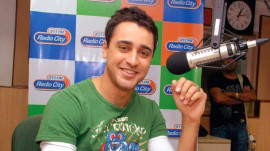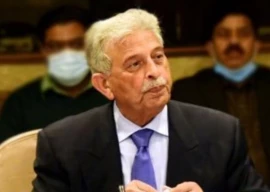
Released on August 15, 1975, the film marked the full-fledged debut of Amjad Khan (who played Gabbar Singh) and starred a slew of some of India’s most promising actors: Dharmendra, Amitabh and Jaya Bachchan, Hema Malini and Sanjeev Kumar.
But the film’s success, which has made it a cultural reference and the yardstick for what Bollywood films are compared to, was unexpected. Clocking in at three hours and 20 minutes, Sholay was deemed to be too long. To boot, it had an unconventional ending.
The film was scripted by Javed Akhtar and Salim Khan. According to Akhtar, “We had no idea that this will become such a huge film. We conceived an idea and when we started working on the screenplay, it gradually dawned on us that the film has more than two important characters. After 35 years, even the minor characters are used in ads, promos, films and sitcoms.”
Sholay, which told the quintessential tale of good vs evil, was set in a rural landscape and laced with themes of revenge, rehabilitation, love and loss, did not do well at the box office initially.
Lead actor Amitabh Bachchan says that the crew had planned to re-shoot the climax. “As things were not going right, we all - Salim Saab, Javed Saab and Rameshji - met in our house on Saturday, the next day of the release. All were thinking what we can do to improve it or if we could do something to save the film.”
As it turns out, they didn’t need to. Audiences grew to love the unconventional aspects to the film, the enduring friendship between Jai (Bachchan) and Veeru (Dharmendra) and the quiet anger of Sanjeev Kumar, who longs for revenge. It ran at one cinema for five years straight, and made millions at the box office. Amjad Khan, who played the tribal gang leader Gabbar Singh, was an overnight sensation. To date, the dialogues, “kitney aadmi they” and “jo darr gaya samjho marr gaya” are quoted ad nauseam. It went on to become the highest grossing film to release in India.
Hema Malini’s turn as the flamboyant, loud-mouthed Basanti, and Jaya Bachchan’s role as the mute, suffering widow formed an interesting parallel that is seldom found in Bollywood productions today.
“It remains the box office gold standard, a reference point for both the Indian film-going audience and the film industry. For Sholay is not merely a film, it is the ultimate classic,” film critic Anupama Chopra wrote in her book Sholay: The Making of a Classic.
Across borders - Pakistani actors on Sholay
Behroz Sabzwari: “The entire film was good, and though initially the critics claimed that it would not be able to do good business, the entire film was later hailed by the viewers as the best film ever. What Ramesh Sippy was able to do then, he was never able to give another one like it, ever again.”
Favourite scene: “When the blind cleric asks, ‘Itna sannata kyun hai bhai?’”
Aijazz Aslam: “Gabbar Singh was a phenomenal character. The dialogue I like best is ‘Kitne aadmi they.’”
Favourite scene: “The most touching scene is the final coin tossing scene. When Veeru takes the coin from Jai’s hand and gets to know that he has been tricked all along. Jai had been able to make the most of all the situations because the coin was double-headed.”
Shabbir Jan: “My favourite dialogue was ‘Bhaag Dhanno bhag, ajj teri Basanti ki izzat ka sawal hai.’” For Jan, the entire film is “a praiseworthy work.”
Published in the Express Tribune, August 8th, 2010.




























1714024018-0/ModiLara-(1)1714024018-0-270x192.webp)









COMMENTS (5)
Comments are moderated and generally will be posted if they are on-topic and not abusive.
For more information, please see our Comments FAQ